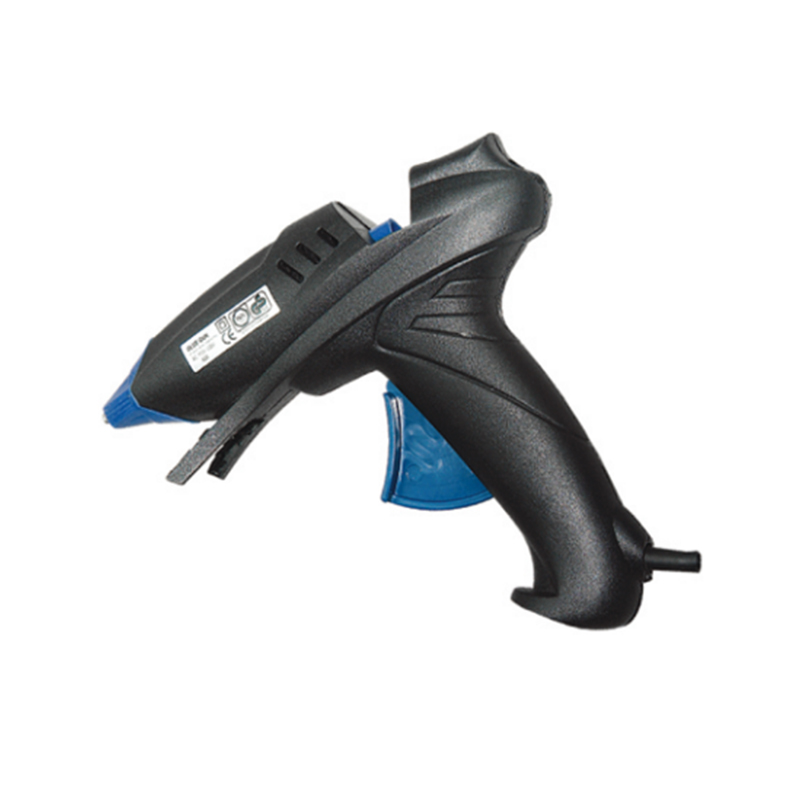What are the advantages and disadvantages of using hot glue guns versus spray adhesives or liquid glues for specific applications?
1. Hot Glue Guns
Advantages
Quick Application : Hot glue solidifies rapidly after application, allowing for fast assembly and minimal downtime.
Versatility : Works well with a wide range of materials, including porous (e.g., wood, fabric, foam) and irregular surfaces.
Gap Filling : The molten glue can fill gaps and uneven surfaces, creating a strong bond even on rough or mismatched materials.
Ease of Use : Simple to operate; no mixing or preparation is required.
Temporary Bonds : Ideal for applications where temporary or semi-permanent bonds are needed, such as crafting or prototyping.
Non-Toxic : Once cooled, hot glue is generally non-toxic and safe to handle.
Disadvantages
Heat Sensitivity : Hot glue softens or melts at high temperatures, making it unsuitable for heat-prone environments.
Moisture Resistance : Not waterproof or highly moisture-resistant, limiting its use in wet or humid conditions.
Bond Strength : While strong for lightweight materials, hot glue may not provide sufficient bonding strength for heavy-duty or load-bearing applications.
Messy Application : Can be messy if not applied carefully, especially when working with intricate or small projects.
Limited Precision : Not ideal for fine, detailed work due to the relatively large bead size of the glue.
Best Applications
Crafting : Ideal for DIY projects, school crafts, and decorative items.
Packaging : Used for sealing boxes, attaching labels, or assembling lightweight packaging materials.
Textiles : Bonding fabrics, trims, and embellishments without sewing.
Prototyping : Temporary bonds for mock-ups or models.

2. Spray Adhesives
Advantages
Even Coverage : Provides a uniform, thin layer of adhesive over large areas, making it ideal for bonding flat or smooth surfaces.
Fast Drying : Many spray adhesives dry quickly, allowing for rapid assembly.
Clean Finish : Leaves no visible residue or bulk, making it suitable for aesthetic applications.
Flexible Bonds : Some spray adhesives remain flexible after drying, which is beneficial for bonding materials that may expand or contract.
Wide Range of Materials : Effective on a variety of materials, including paper, cardboard, foam, fabric, and some plastics.
Disadvantages
Over-Spray Risk : Can lead to over-spray, which may damage surrounding areas or create a mess.
Ventilation Required : Most spray adhesives emit fumes, requiring proper ventilation during use.
Limited Strength : Generally provides weaker bonds compared to hot glue or liquid glues, making it unsuitable for heavy-duty applications.
Surface Sensitivity : Works best on clean, dry, and smooth surfaces; may not adhere well to oily, dusty, or textured materials.
Not Ideal for Vertical Surfaces : The adhesive may drip or run when applied to vertical surfaces, leading to uneven coverage.
Best Applications
Large Surface Bonding : Ideal for laminating, mounting posters, or bonding large sheets of material like foam board or fabric.
Temporary Bonds : Often used for temporary or repositionable bonds, such as in crafting or display setups.
Lightweight Materials : Suitable for bonding lightweight materials like paper, cardboard, or foam.
3. Liquid Glues (e.g., White Glue, Super Glue, Epoxy)
Advantages
Strong Bonds : Certain liquid glues, like super glue or epoxy, provide extremely strong, durable bonds that can withstand stress and environmental factors.
Precision : Liquid glues can be applied with precision, making them ideal for detailed or intricate work.
Versatility : Different types of liquid glues (e.g., white glue for paper, epoxy for heavy-duty tasks) cater to a wide range of materials and applications.
Waterproof Options : Some liquid glues, like epoxy or marine-grade adhesives, offer excellent water and moisture resistance.
Long-Term Durability : Many liquid glues cure into a permanent bond that can last for years, even under harsh conditions.
Disadvantages
Slower Drying Time : Many liquid glues take longer to dry or cure compared to hot glue or spray adhesives, which can slow down production or assembly processes.
Messy Application : Can be difficult to control the amount of glue applied, leading to excess glue or uneven coverage.
Surface Preparation : Requires clean, dry surfaces for optimal bonding; oils, dirt, or moisture can weaken the bond.
Brittleness : Some liquid glues, like super glue, can become brittle over time, making them less suitable for flexible or moving parts.
Curing Process : Two-part adhesives like epoxy require mixing, which can be messy and time-consuming.
Best Applications
Heavy-Duty Bonding : Epoxy is ideal for structural or load-bearing applications, such as bonding metal, wood, or composites.
Precision Work : Super glue is perfect for small, detailed projects, such as repairing ceramics, glass, or plastic.
Paper and Cardboard : White glue (e.g., PVA glue) is commonly used for bonding paper, cardboard, and lightweight materials.
Permanent Bonds : Liquid glues are often used for long-lasting, permanent bonds in industrial or construction settings.

 English
English 中文简体
中文简体












